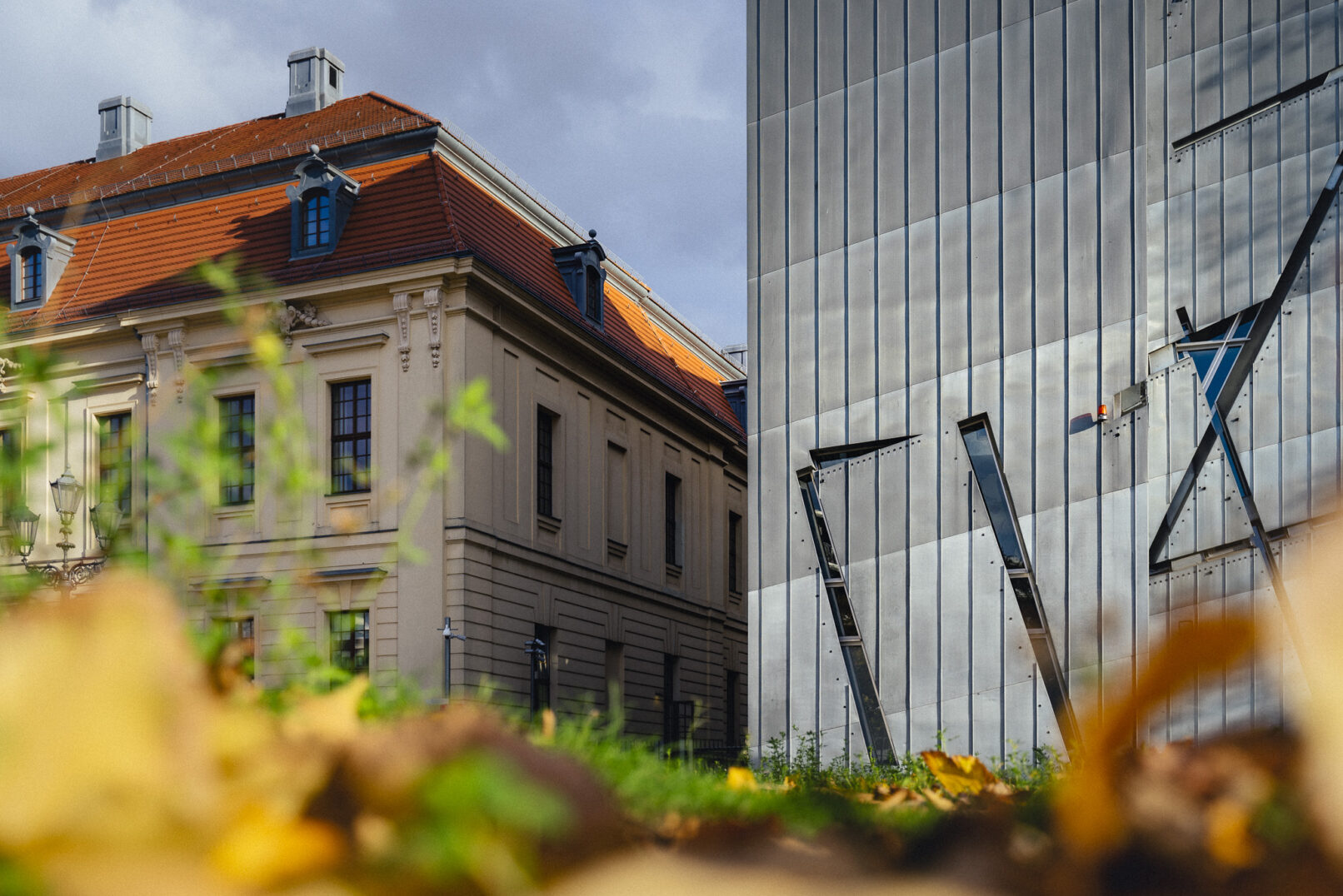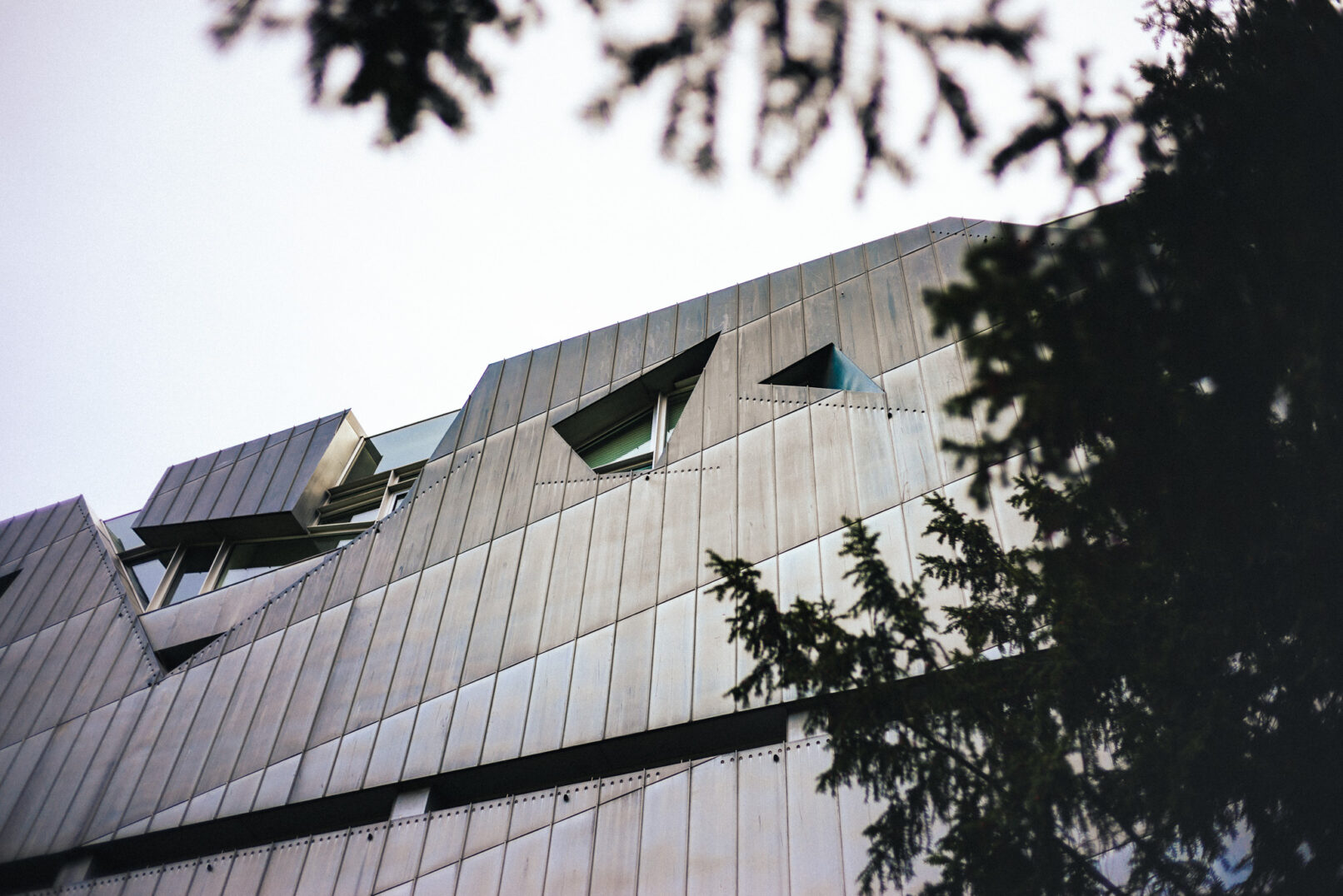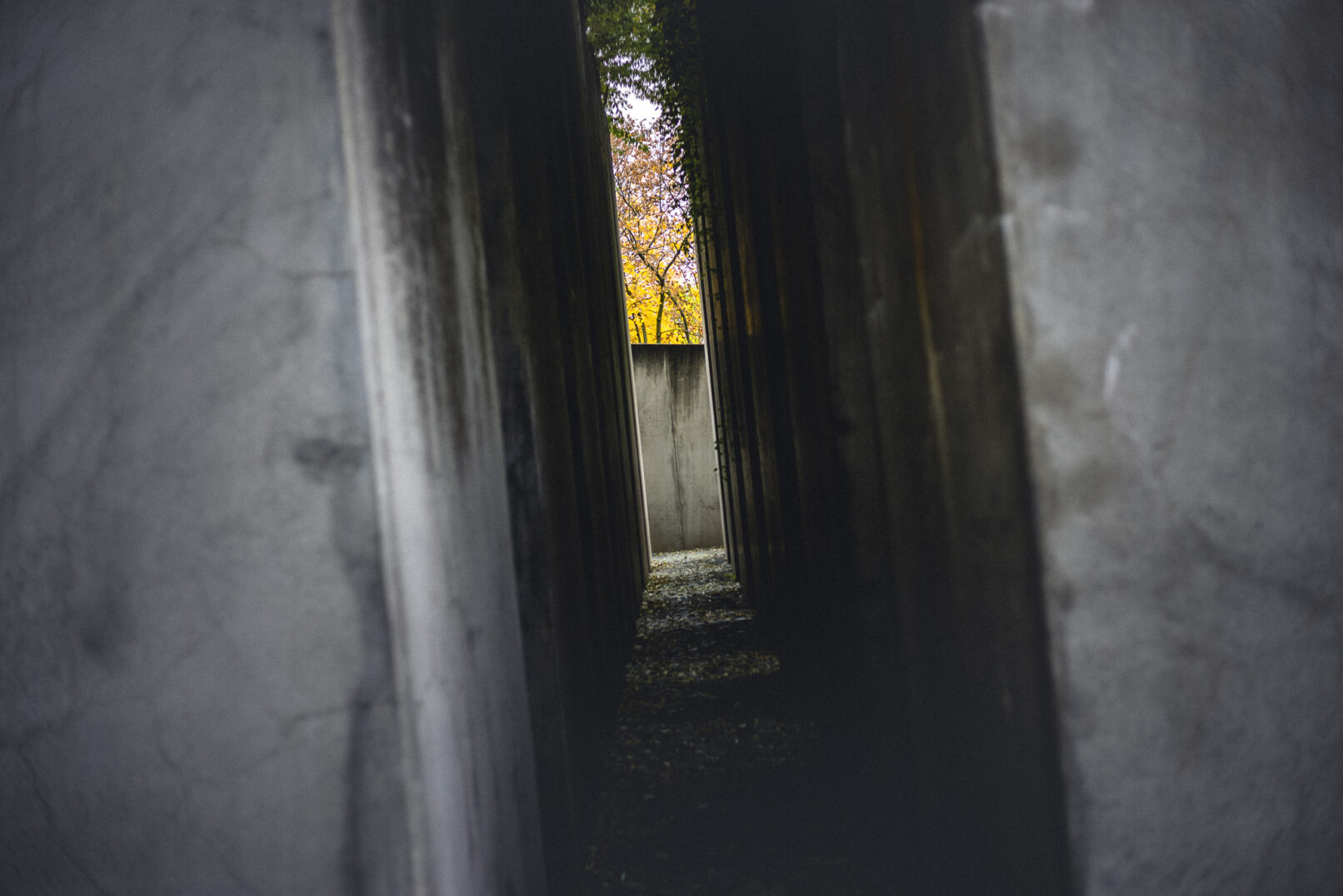Jewish Museum – Berlin
Fragmented – October in Berlin, the warm colors of autumn leaves contrast the cold, cracked titanium and concrete surfaces. Designed by Daniel Libeskind and opened in 2001, the building section of the Jewish Museum is not an inviting place. Rather, it is an uncomfortable place that demands an examination of German-Jewish history. Loss, brokenness and mourning are inevitably a part of it, but so are cultural commonalities and hope. Precisely this served as the basis and inspiration for the design of the architecture. Libeskind himself named his design “Between the Lines” because for him it is about two lines, two currents of thought, organization and relationships. Externally, the zigzag-shaped building is self-contained. Visitors can only get inside via an underground passage that begins in the entrance area of the neighboring baroque old building. The sharp-edged, fragmented formal language continues in the interior. The museum’s controversial architecture cleverly meshes with the multi-layered exhibits on German-Jewish history. Shifting emotions of trepidation, loneliness, hopelessness, and coldness become as palpable to the visitor as tranquility, beauty, and connection.
Against the background of Jewish history and the architecture of the building, “fragmented” was an obvious title for my photo reportage. I think I was able to capture quite well the mood and feelings that arose in me when experiencing this architectural ensemble.






















